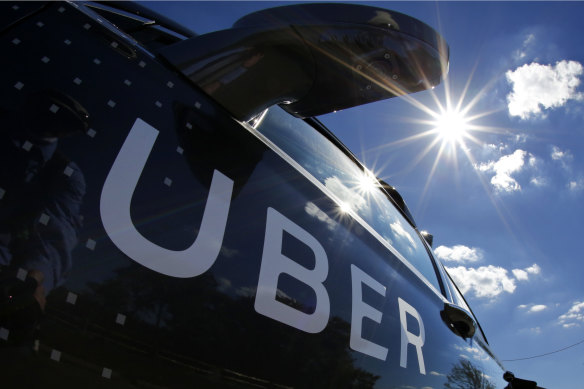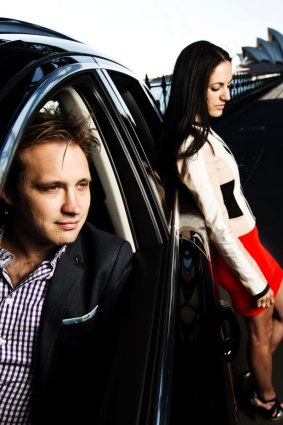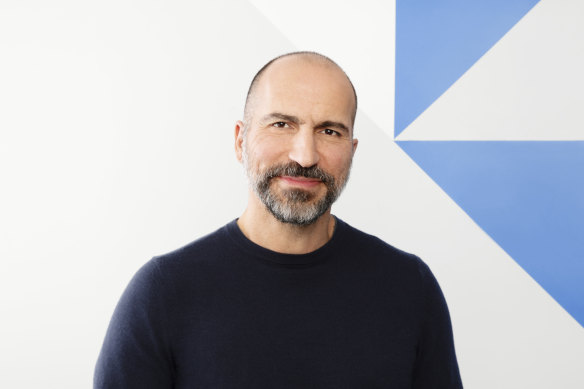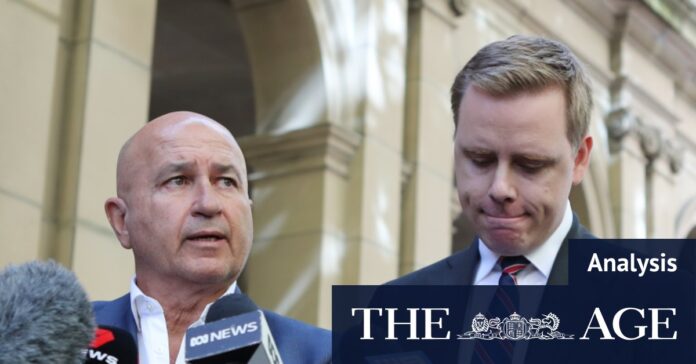Australia quickly became one of Uber’s largest markets and such was its strategic importance to the company that it flew down Barack Obama’s former campaign manager David Plouffe to meet with the then-newly elected Daniel Andrews government in a bid to lobby for favourable regulations.
Uber’s playbook was the regulatory equivalent of shooting first and asking questions later. It would enter new markets in which it hadn’t been regulated, effectively daring governments to fine them, or regulate them. And it worked.

The company’s internal corporate culture mirrored how aggressive it was in taking on the competition. It was essentially the poster child of Silicon Valley’s mantra of “move fast and break things”: Kalanick was accused of fostering a culture of sexism and “bro culture” before he eventually was forced to resign over a series of lawsuits relating to sexual harassment and workplace discrimination.
When Maurice Blackburn launched its class action 2019, its key argument was that Uber knew its operations in Australia were illegal because the company understood that its drivers were not properly licensed and did not have proper accreditation.

“Uber said that was innovation, and we said it was illegal – a conspiracy by unlawful means,” Maurice Blackburn principal Michael Donelly said on Monday.
“We also alleged that in conducting Uber X operations, Uber engaged in a variety [of] shocking conduct. We said that they misled regulators, geo-blocked authorities, and even went so far as to activate an electronic kill switch to disrupt a search warrant while in progress.”
Donnelly wasn’t exaggerating. Leaked files revealed senior Uber executives ordered the use of a “kill switch” to prevent police and regulators from accessing its data, as part of a bid to thwart law enforcement when its services were still illegal.
For years though, despite its myriad controversies, Uber was a success story. The company knew its customer experience was far superior to taxis and that passengers would flock to it as a result.
David Rohrsheim was Uber Australia’s first CEO, and pitched the company’s arrival in Sydney to then-CEO Kalanick in 2012.
“It is easy to forget how strong the taxi monopoly was back in 2012, and how poor the service was for both riders and drivers,” he tells this masthead. “That is why I joined Uber. CabCharge was still charging 11 per cent just for a credit card payment.
“I’m very proud of the team that launched Uber in Australia. It all started with great engineers who invented great technology … The iPhone was still new and Uber was one of the first apps to connect with the real world around you.”
Rohrsheim, who is now a start-up investor, says his team were young and enthusiastic, often working until midnight on customer support tickets.
“Uber was a fast-growing company, and every move was rightly put under a microscope, so the learning curve for managers was steep,” he says. “My decision to maintain surge-pricing during the Lindt Cafe Siege in 2014 was a misstep that led to significant changes in our policies, demonstrating how Uber could listen and learn.
“The playbook for a global leader must be different for a new start-up.”
In its early days Uber – and in particular its budget options like UberX and Uber Pool – were far cheaper than taxis and provided a better ride in almost every regard.
Drivers and passengers are rated out of five – an imperfect system that nonetheless encourages good behaviour on both sides – and Ubers were often cleaner than taxis, and the cars themselves often better, too.
Drivers were a diverse bunch, with many taking on driving as a side hustle while studying or working full-time in a different role.
However, things have changed. Over the past few years interest rates have shot up and venture capital money is no longer cheap. Uber and other start-ups were subsidised over the past decade by venture capitalists who were willing to splash cash to help hoover up market share. Uber effectively lost money on every ride, thanks to bets made by VC firms.
One uncomfortable truth has become obvious: the gig economy was built off cheap venture capital, and on the backs of workers who often have had little to no protections. Uber’s drivers have benefited from flexible working hours, but often at the cost of little to no job security, or benefits such as superannuation and workers’ rights.

The long-term future of the gig economy is now looking more certain, at least in Australia, after amendments to the Fair Work Act passed in February. As a result, the Fair Work Commission from August will set minimum standards, including conditions and pay rates, for Uber drivers.
Uber itself says today’s regulatory environment is far different to when it entered Australia.
“When Uber started more than a decade ago, ride-sharing regulations did not exist anywhere in the world, let alone Australia,” a spokesperson said on Monday in response to the class-action settlement.
“Today is different, and Uber is now regulated in every state and territory across Australia, and governments recognise us as an important part of the nation’s transport mix.”
But, at the same time, the emperor now has no clothes. The unsustainable nature of Uber’s early business model is now clear: start-ups that exploit regulatory loopholes cannot do so forever, nor can they provide below-cost services that undercut their competitors over the long term.

The company has also long distanced itself from Kalanick, and current CEO Dara Khosrowshahi, who joined Uber after leading Expedia, has by all accounts cleaned up the company and its culture.
“Travis was the right person for Uber in its founding,” Khosrowshahi said in a recent interview. “I could have never accomplished what he accomplished and have a high degree of respect for what he did, but I also understand what he did wrong.
“I think he understands what he did wrong.”
Uber now competes locally with Chinese ride-sharing giant Didi, Indian operator Ola, female-focused provider Shebah, InDriver, and taxis, which are still grappling with their own issues. Rogue taxi drivers often refuse to turn on fare meters, and taxi fares are still typically higher than those from Uber.
It seems somewhat inevitable, however, that start-ups generally become the things they were founded to disrupt: Uber has copied key taxi features, and taxis can now be booked via an app. Earlier this year, Uber added a feature in which customers can ring and book an Uber like they would a taxi. Australian start-up Milkrun lasted about two years delivering venture capital-subsidised groceries before it collapsed and was acquired by Woolworths.
Uber rolls on, as does the taxi industry. Travis Kalanick has moved onto his next start-up – rumoured to be a company building restaurant robots. What was once a pirate of the roads is now highly regulated, and what was once the fastest-growing start-up in history is now just another big tech behemoth chasing profits.
The Business Briefing newsletter delivers major stories, exclusive coverage and expert opinion. Sign up to get it every weekday morning.
[ad_2]


